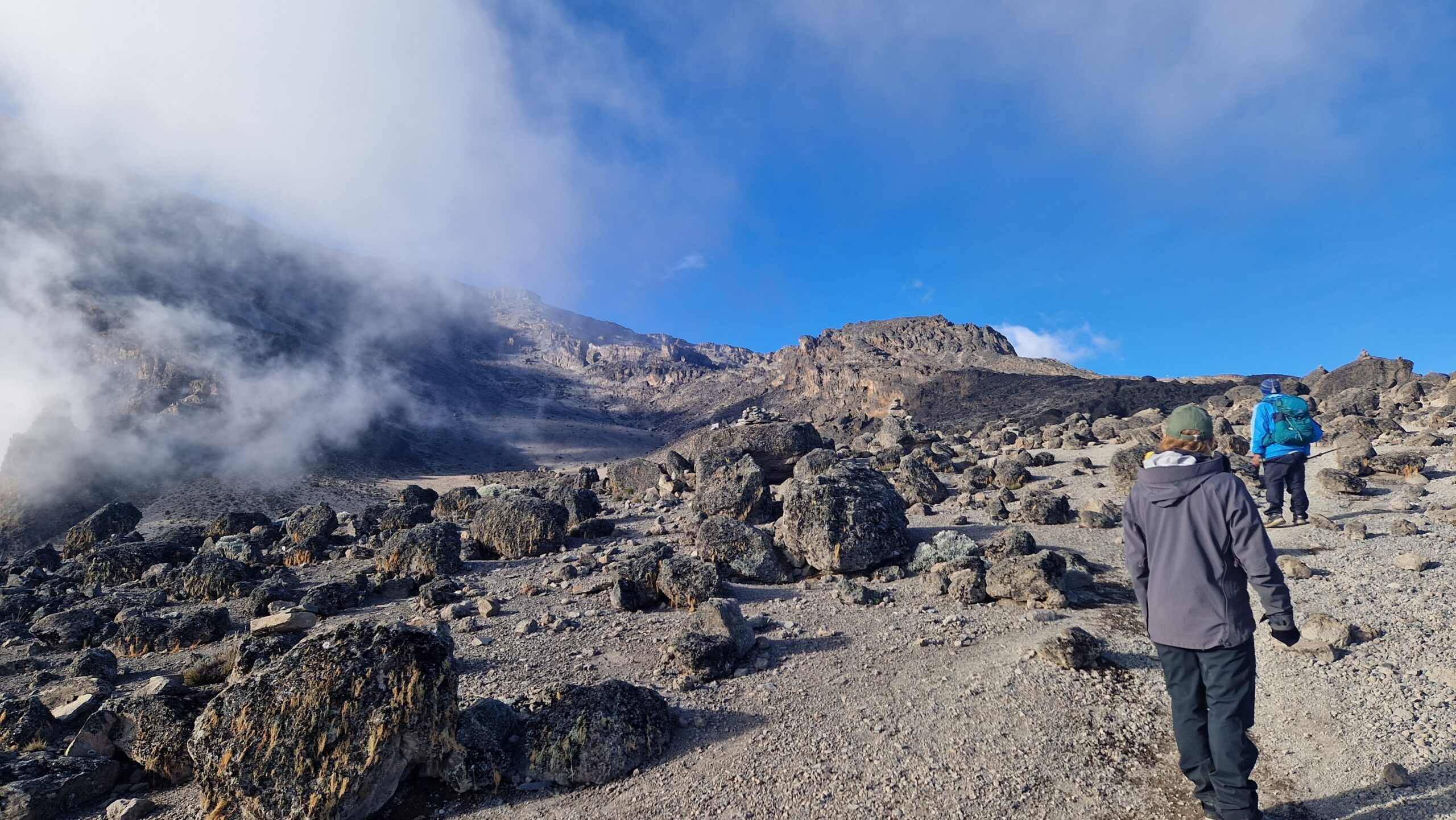5 Days Marangu Route
fromIt is unique for offering hut accommodations instead of camping, making it popular among trekkers seeking a more comfortable experience.
-
Reviews 0 Reviews0/5
-
Vacation Style Holiday Type
-
Europe
-
Hiking
-
Jungle
-
-
Activity Level Challenging
-
The Marangu Route, often called the “Coca-Cola Route,” is one of the oldest and most straightforward paths to the summit of Mount Kilimanjaro. It is unique for offering hut accommodations instead of camping, making it popular among trekkers seeking a more comfortable experience.
Key Highlights of the Marangu Route:
- Duration:
- Typically completed in 5 or 6 days.
- The 6-day itinerary is recommended for better acclimatization.
- Distance:
- Covers approximately 64 kilometers (40 miles) round trip.
- Difficulty:
- Considered moderate but challenging due to the rapid ascent.
- Less acclimatization time compared to other routes.
- Starting Point:
- Begins at Marangu Gate on the southeastern side of Mount Kilimanjaro.
- Accommodation:
- Trekking huts (Mandara, Horombo, and Kibo huts) are available, offering bunk beds, mattresses, and basic facilities.
- No camping required.
- Scenery:
- Passes through lush rainforest, moorlands, and alpine desert.
- The scenery is less varied compared to routes like Lemosho or Machame.
- Acclimatization:
- Fewer opportunities for the “climb high, sleep low” principle.
- Rapid ascent increases the risk of altitude sickness.
- Route Description:
- Day 1: Trek through the rainforest to Mandara Hut.
- Day 2: Climb through moorland to Horombo Hut.
- Day 3: Continue to Kibo Hut, crossing the alpine desert.
- Day 4: Summit day (Uhuru Peak) and descend to Horombo Hut.
- Day 5: Final descent to Marangu Gate (optional extra acclimatization day at Horombo Hut).
- Success Rate:
- Lower than other routes due to the shorter duration and limited acclimatization.
- Cost:
- One of the most affordable routes due to its shorter duration and use of huts (reduces logistical costs).
Pros:
- Offers hut accommodation, ideal for those who prefer not to camp.
- A direct and shorter route to the summit.
- One of the least expensive routes.
- Well-maintained trails.
Cons:
- Lower success rate due to limited acclimatization.
- Less scenic compared to other routes.
- Can be crowded, especially during peak seasons.
Who Is It For?
- Beginners or trekkers who prefer a less rugged experience.
- Those on a tighter budget or with limited time for the trek.
- Park Fees:
- Kilimanjaro National Park entry, camping, and rescue fees.
- Accommodation:
- Camping gear (tents, sleeping mats).
- Two nights’ hotel accommodation (before and after the trek) in Moshi or Arusha.
- Meals and Drinks:
- All meals during the trek (breakfast, lunch, dinner).
- Drinking water and hot drinks (e.g., tea, coffee).
- Guides and Crew:
- Professional, English-speaking mountain guides.
- Porters to carry luggage and camping gear.
- Cooks to prepare meals.
- Transport:
- Transfers to and from the mountain gate (Londorossi Gate).
- Equipment:
- Dining tent with tables and chairs.
- Cooking and eating utensils.
- First aid kits, including an oxygen cylinder for emergencies.
- Permits and Documentation:
- Trekking permits and other required documentation.
- Support Services:
- Emergency evacuation (only to the park gate, not medical evacuation).
- Summit certificate (Gold for Uhuru Peak and Green for Stella Point).
- Flights:
- International and domestic flights to Tanzania.
- Visa and Travel Costs:
- Tanzania tourist visa fees.
- Travel insurance (mandatory for Kilimanjaro treks, covering high-altitude trekking and evacuation).
- Personal Equipment:
- Clothing, sleeping bags, trekking poles, and personal gear.
- Snacks and energy bars.
- Optional Expenses:
- Tips for guides, porters, and cooks (customary but not included).
- Additional hotel nights or excursions outside the trek.
- Medical Expenses:
- Vaccinations or medication (e.g., malaria prophylaxis).
- Personal first aid supplies.
- Beverages:
- Alcoholic drinks, sodas, and bottled water (beyond the trek-provided water).
- Other:
- Souvenirs or personal expenses.
- Gear rental (if needed, often available through the tour operator at extra cost).
Night 1: Moshi (Pre-Trek Accommodation)
Before starting your trek, you’ll stay in a hotel or lodge in Moshi to relax and prepare for the climb.
Standard Hotel Options in Moshi:
- Parkview Inn – A mid-range hotel with a swimming pool and great views of Mount Kilimanjaro.
- Chanya Lodge – Cozy and well-maintained, offering great food and service.
- Keys Hotel – A popular choice with trekkers, offering comfort and convenient amenities.
Nights 2-5: Mountain Hut Accommodation on Kilimanjaro
The Marangu Route provides dormitory-style huts at various points on the trek. These huts have bunk beds and mattresses, and meals are served in a shared dining hall.
Standard Huts Along the Marangu Route:
- Night 2: Mandara Hut (2,700m) – Located in the lush rainforest zone, offering a relaxing atmosphere to start your trek.
- Night 3: Horombo Hut (3,720m) – A large hut with stunning views of the Mawenzi and Kibo peaks.
- Night 4: Kibo Hut (4,703m) – The base camp located in the alpine desert zone, just below the summit.
- Night 5: Horombo Hut (3,720m) – You’ll return here for your final night on the mountain before descending to Moshi.
Huts are shared dormitory-style with bunk beds. You’ll need to bring your own sleeping bag, and basic toilet facilities are available at each hut.
Night 6: Moshi (Post-Trek Accommodation)
After completing your descent, you’ll return to Moshi for a well-deserved rest at the same hotel or lodge where you stayed before the trek.
Key Features of Hut Accommodation:
- Comfort: Mattresses. Trekkers should bring sleeping bags for warmth.
- Meals: Meals are prepared by guides and porters in dining areas at the huts.
- Water: Fresh water is available but must be boiled or treated before consumption.
- Facilities: Basic toilets (long-drop style) and no showers
